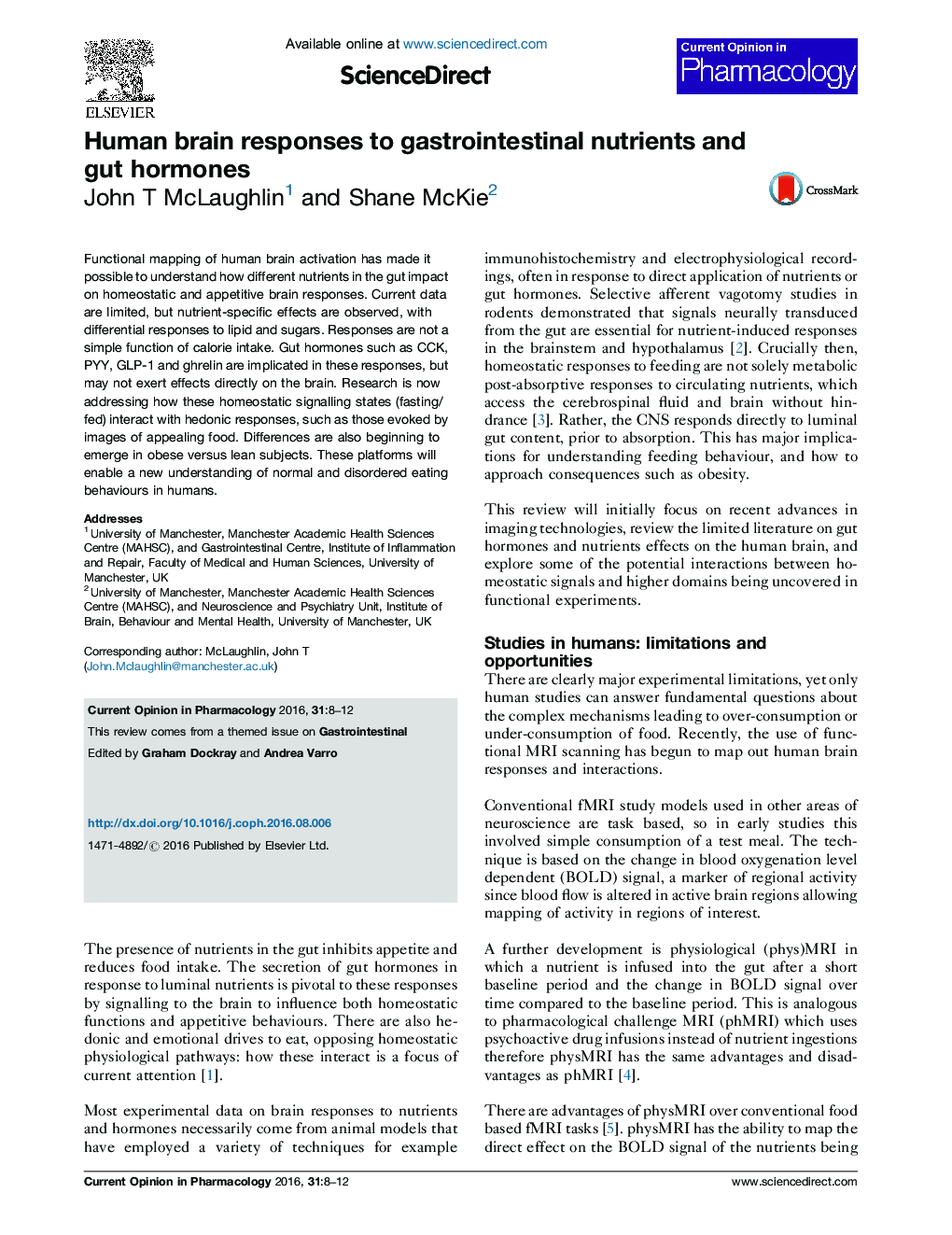| کد مقاله | کد نشریه | سال انتشار | مقاله انگلیسی | نسخه تمام متن |
|---|---|---|---|---|
| 2529724 | 1558117 | 2016 | 5 صفحه PDF | دانلود رایگان |
• Advances in functional imaging have provided new insights into human brain responses.
• Response matrices can be mapped in the brain, and differ between nutrient classes.
• Gut hormones including CCK, GLP-1, PYY and ghrelin affect brain responses.
• Interactions between homeostatic regions and higher centre responses can be studied.
• Gut endocrine status (fasted or fed) strongly influences responses to food images.
Functional mapping of human brain activation has made it possible to understand how different nutrients in the gut impact on homeostatic and appetitive brain responses. Current data are limited, but nutrient-specific effects are observed, with differential responses to lipid and sugars. Responses are not a simple function of calorie intake. Gut hormones such as CCK, PYY, GLP-1 and ghrelin are implicated in these responses, but may not exert effects directly on the brain. Research is now addressing how these homeostatic signalling states (fasting/fed) interact with hedonic responses, such as those evoked by images of appealing food. Differences are also beginning to emerge in obese versus lean subjects. These platforms will enable a new understanding of normal and disordered eating behaviours in humans.
Journal: Current Opinion in Pharmacology - Volume 31, December 2016, Pages 8–12
